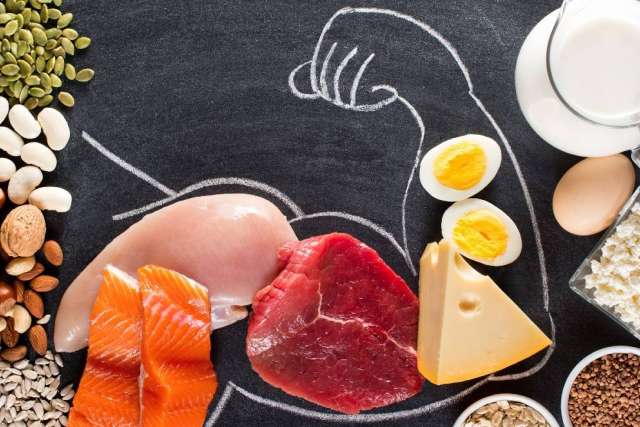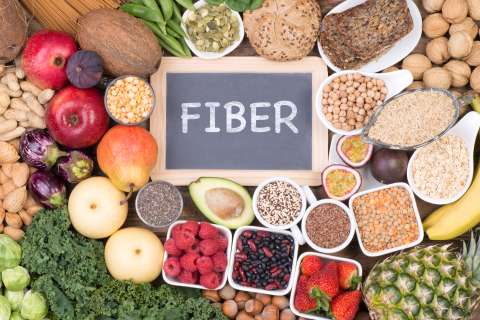“We find most adults are not quite getting enough protein,” says Michael Garcia, MD, a UCLA Health clinical nutritionist. “The tough part is that the amount of protein needed can vary depending on the individual. And it’s not always easy to measure how much protein we're getting.”
But arm yourself with the right information — how much protein you need, the best sources of protein and how to know if you’re not getting enough — and you’ll be able to balance your diet.
Why is protein important?
Your body contains more than 10,000 different proteins. Proteins exist in every body part, from your hair to your bones. They help make and repair cells, which are critical for growth and development.
Proteins are made up of a combination of molecules called amino acids — your body needs 20 different amino acids to function correctly. It can produce 11 of them, but it must get the final nine — called essential amino acids — from the protein you eat. And because the body cannot store amino acids, you need to replenish them regularly.
How much protein should you eat per day?
Experts recommend a daily intake of at least 0.36 grams of protein per pound of body weight (0.8 grams per kg). That’s 43 grams per day for someone weighing 120 pounds, 54 grams daily if you weigh 150 pounds and 72 grams per day if you weigh 200 pounds. But protein needs vary depending on age, activity level and overall health.
When you eat that protein also matters — the protein your body needs must be spread throughout the day. “We’re able to store certain nutrients, but we can't do the same thing with protein,” Dr. Garcia says. “And our bodies can only use so much protein in a sitting and a day.”
The amount of protein to eat at each sitting isn’t the same for everyone. But Dr. Garcia generally recommends about 25 to 30 grams per meal. Consult your primary care physician (PCP) to determine your individual protein needs.
What happens if you don’t eat enough protein?
The recommended amount of daily protein is a good guide for most healthy people. Eating that amount, however, doesn’t always mean you’re getting what you need.
Age is a perfect example. Our bodies do not use protein as efficiently to build and maintain muscle as we age. “If we give a teenager 4 ounces of protein, they’ll be more efficient at building muscle with that protein than someone who’s 50, 60 and older,” Dr. Garcia says. “The recommended amount is really the absolute minimum we need to not fall into a deficient state.”
The problem is that you won’t necessarily notice early signs that your protein intake is low, says Dr. Garcia. If it continues to be low for a long time, though, you may see signs of deficiency — which could have serious health effects.
Signs of a protein deficiency
Common signs that your body is extremely low on protein include:
- Brittle hair and nails, often the first sign of deficiency
- Feeling weak or hungry, since protein supplies energy and satisfies the appetite
- Getting sick often without protein to boost the immune system
- Mood changes or trouble thinking due to fluctuating blood sugar and protein’s effect on the brain’s neurotransmitters (which regulate mood)
- Muscle weakness, since amino acids are essential for building muscle mass
- Stress fractures when bone tissue doesn’t have the protein it needs
If your PCP is concerned, they may run blood tests for additional evaluation. They’ll use the results with other information about your health, lifestyle and diet to determine overall nutritional status.
How to get more protein
A healthy and balanced diet typically provides all the amino acids your body needs, but that means eating protein with each meal and snack. Complete proteins — which contain all nine essential amino acids in equal amounts — provide the most bang for your buck.
Most complete proteins come from animal sources (beef, poultry, eggs, dairy), but some plant-based proteins are also complete, such as:
- Buckwheat
- Hempseed
- Quinoa
- Soy
“You always want to think about the quality of the protein you’re getting,” Dr. Garcia says. “There is a benefit to eating a complete protein from the actual food source, but mixing in some non-complete protein sources is not bad.”
Look for easy ways to add or substitute complete proteins into what you already eat. Switch rice for quinoa, include edamame in salads, or add hempseed or Greek yogurt to smoothies.
“Do a quick (internet) search, and you’ll see all the options,” Dr. Garcia says. “Find what works with your tastes. And while variety is good, it’s not necessary when you eat quality, complete proteins. Consistently getting complete protein is the goal.”
If you’re concerned about your diet or the amount of protein you get, reach out to a clinical nutrition specialist or your primary care physician.




